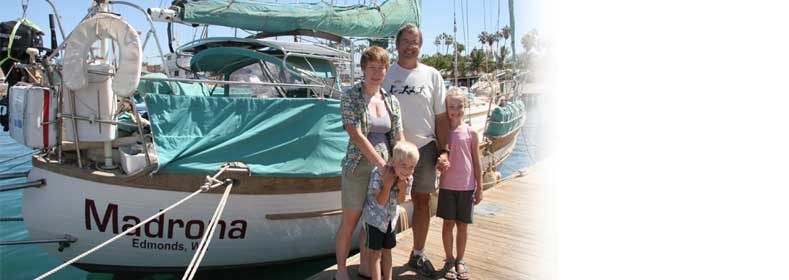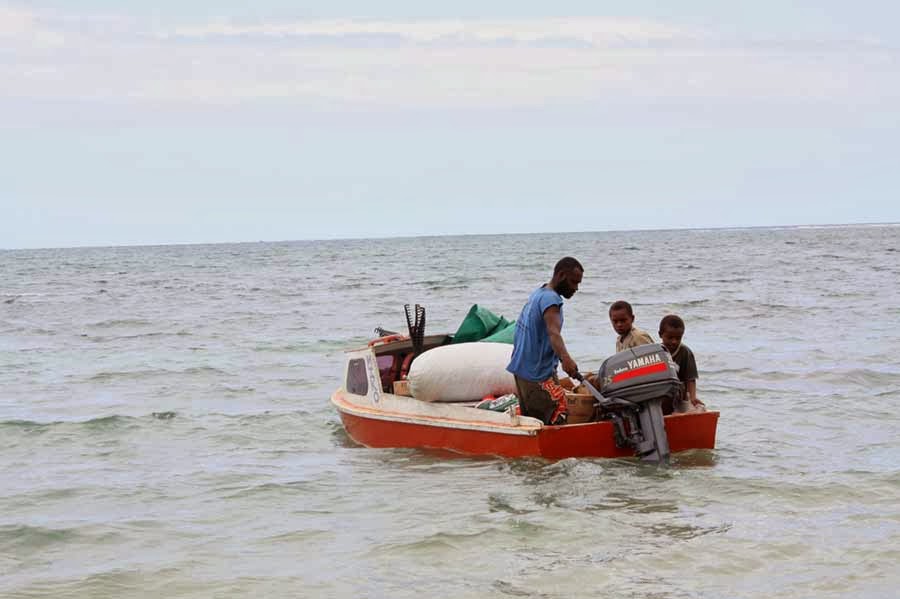Hi all,
So we're still in Bali. We've renewed our visas, and are renewing our CAIT as we've decided to sail north to Thailand. We are waiting for Capricorn Dancer to arrive here at Serangen - they blew out a jib at Sumbawa and are moving a little slow. They also have Mathew on board, and we hope he can resurrect out outboard. All are well. Griffyn is on a sleepover with Jolan on Kealba.
So here is our photo post from Komodo National Park. Enjoy.
 |
| Approaching Komodo from the South. |
 |
| Wind on the nose AND against a 4 knot current to boot. |
 |
| Madrona had to tow Capricorn Dancer into the anchorage - her engine was down. |
 |
| An epic battle aboard Capricorn Dancer - Griffyn, Keelen, Tamsyn, and Cleo. |
 |
| At anchor the view includes dragons walking on the beach. |
 |
| Shore party - with our big stick to fend off the top predator. A French sailor died on this beach some time back - the bites are usually fatal without aggressive antibiotics. We had our first close encounter just up ahead in those mangroves. He was about 9 feet long, but moved off. |
 |
| Tracks in the beach sand - the hind print is about 8 inches long. |
 |
| One day at Rincha we climbed a big hill, and below and away the view stretched across the Park. |
 |
| Dragon tracks! We followed him up to the bush - but no further. |
 |
| Sunset on the beach. Three cities rose and fell with that tide. |
 |
| We moved ship to Park HQ so we could go on a guided walk with Rangers. It was great to see their operation as a park professional myself. |
 |
| A very cool entrance. How much to they pay those lizards in kibble to get them to stand like that all day? |
 |
| Sluggish in the morning sun. A big one. |
 |
| A pair sunning. They are quite large; much larger than zoo specimens we've seen back home. |
 |
| Here are George an Gracie from behind. |
 |
| We pause with our guides along a trail. The "Rangers" don't actually work for the park, but are independent contractors with virtually no benefits or security. |
 |
| These palms are very cool. |
 |
| See? |
 |
| The country was rolling, and bisected by streams and water holes that were drying up this time of year. |
 |
| This female was very aggressive. |
 |
| She made the guides extremely nervous. They can run faster than humans. |
 |
| She was protecting her nest. |
 |
| Bees! |
 |
| One of the guides. |
 |
| Water buffalo in one of the few water holes left. The guides believed this one had been bitten by dragons, and would be food withing a week or two. |
 |
| A Spitting Cobra. |
 |
| Beautiful creatures. |
 |
| An evaluating gaze. |
 |
| Griffyn loved the landscape. |
 |
| It had a timeless quality. |
 |
| Tamsyn, Cleo, Caroline and Robb overlooking the anchorage. |
 |
| All your questions answered. |
|
|
|
|
























































